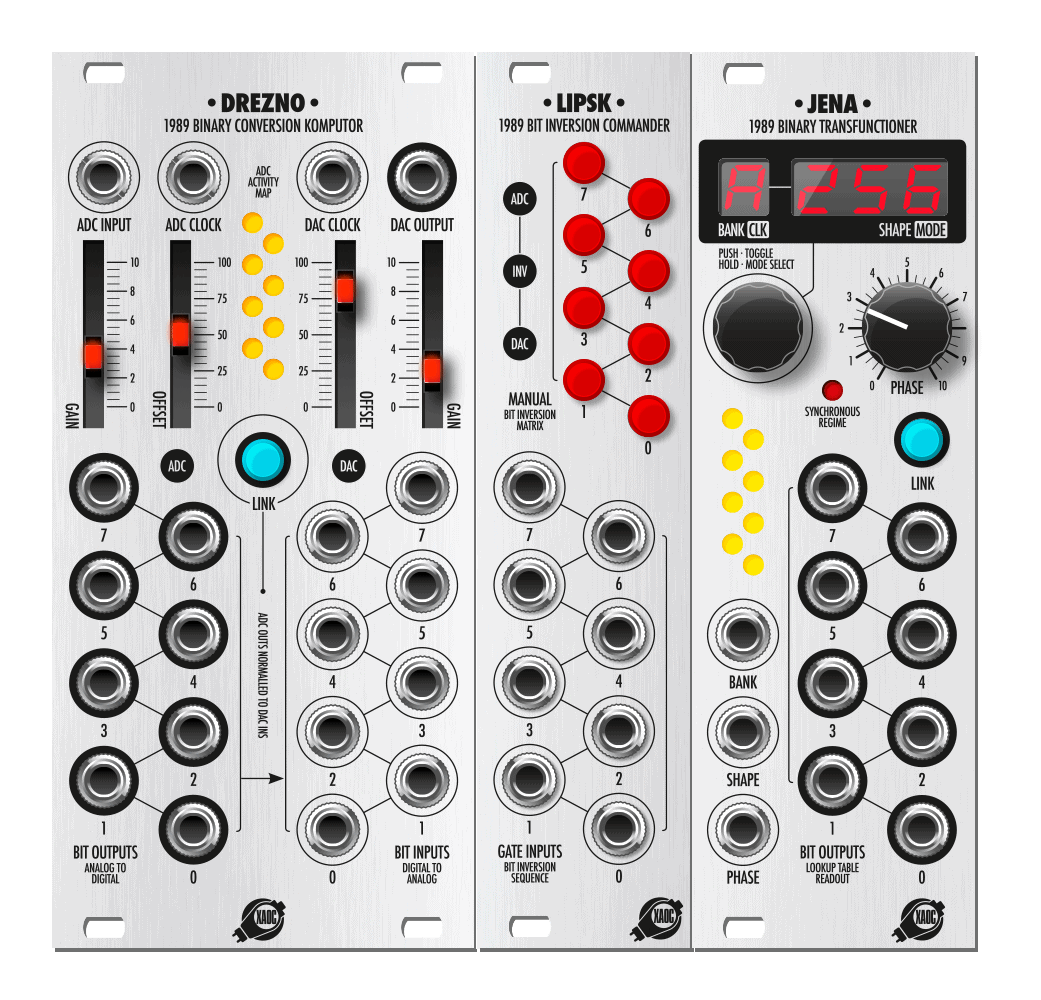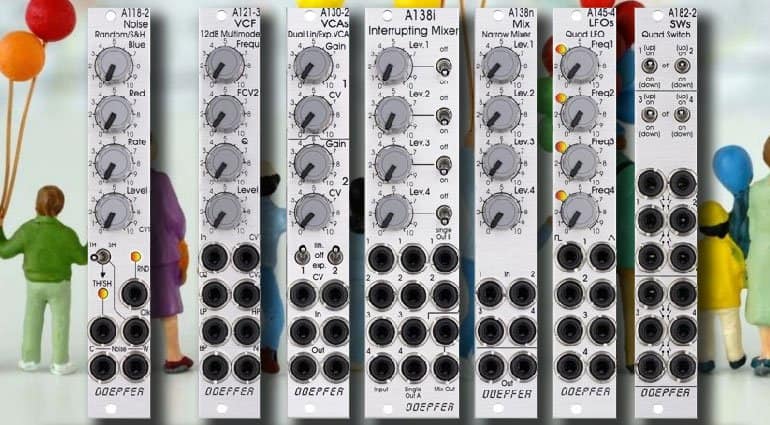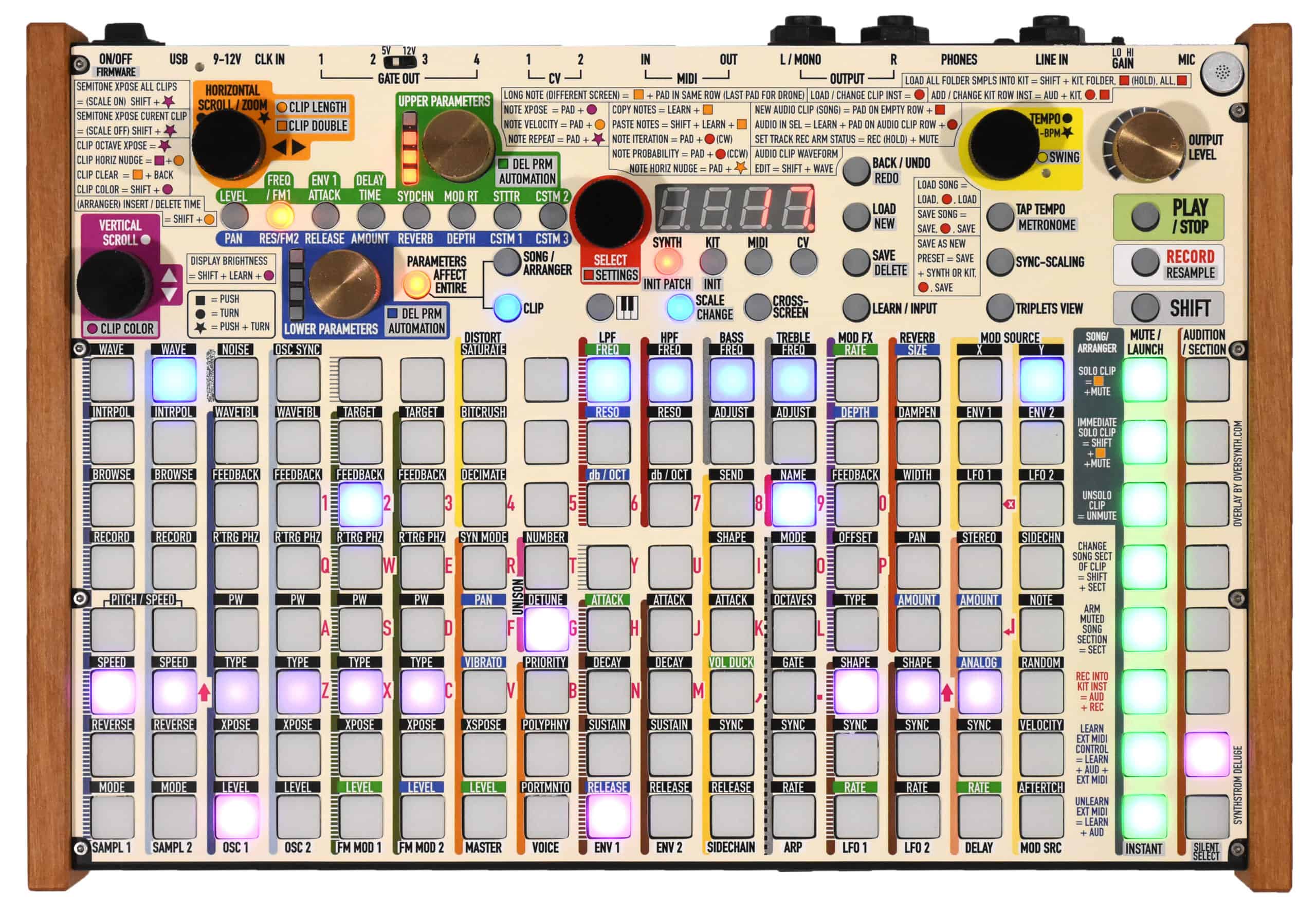Jena 1989 Binary Transfunctioner
Jena is an additional element of the Xaoc Leibniz Subsystem. So far we did see Drezno and Lipsk which have been the beginning in a series of modules which form The Leibniz Binary Subsystem. The Leibniz Binary Subsystem is a group of 8-bit signal processing devices offering comprehensive digital signal manipulation, as well as an audio signal, control voltage, trigger, and gate generation. Jena joins to the Drezno module in a loopback.
A simple VCO sawtooth or a triangle wave may be transformed to a plethora of waveshapes from any of the shape banks, with additional, deep through–zero phase modulation. Individual bit outputs may be used to produce interesting signals as well. There is a dedicated bank of Walsh functions — with these signals you can perform additive Walsh synthesis, not very common in Eurorack, but a quite powerful technique.
Transforming slow waveforms to sequences of binary signals is a great way to create rhythmic drum patterns. Jena comes with a special bank that has plenty of such patterns — just connect up to 8 drum voices to individual bit outputs on Jena. The rhythms can be selected or morphed on the fly through an external CV input.
Obviously, being limited to 8 bits both in phase and signal value, Jena will not deliver crystal clear timbres you may know from many wavetable oscillators. Instead, it offers buzzy, jittery and gritty sounds as well as jerky and skippy rhytms, just like vintage computers, that were sometimes unreliable and unpredictable.
• Digital waveshaper and function mapper
• Through–zero phase modulation
• Walsh function generator
• Drum pattern generator
• Voltage controlled bank and shape scanning.
Drezno 1989 Binary Conversion Komputor
Drezno consists of a flexible ADC (analog-to-digital converter) and DAC (digital-to-analog converter) that can be cross-patched or used independently.
Drezno features:
• digital manipulation of analog signals and voltages
• converting slowly changing voltages to 8 rhytmic gates
• converting combinations of up to 8 gate signals to complex waveforms
• quantization and bit mangling or crushing of signals
• a digital sample&hold function

The input is converted to a digital representation and made available in the form of 8 binary (gate) signals. These signals can be freely mixed, scrambled, inverted, cross-patched, etc. In the end, 8 binary signals are converted back to the analog domain. Both conversions may be performed synchronously with external clock patched to respective clock inputs, or asynchronously, at high speed of the internal clock. Drezno can handle signal changes as fast as 1MHz, so there is no aliasing with audio rate input.
Drezno may also act as an input/output device for an upcoming barebone “Leibniz” digital signal processing subsystem.
Lipsk 1989 Bit Inversion Commander

Lipsk is an expander for Xaoc Drezno module that allows flipping (invert) individual bits of the digital signal representation. It features 8 illuminated tact switches for manual control as well as 8 individual gate inputs. When connected to Drezno which is processing a waveform, inversion of individual bits yields fractal-like pattern waveforms.
Bit processing logic in Lipsk is hardware based, hence there is virtually no latency, and the binary signals may change at extreme rates.










